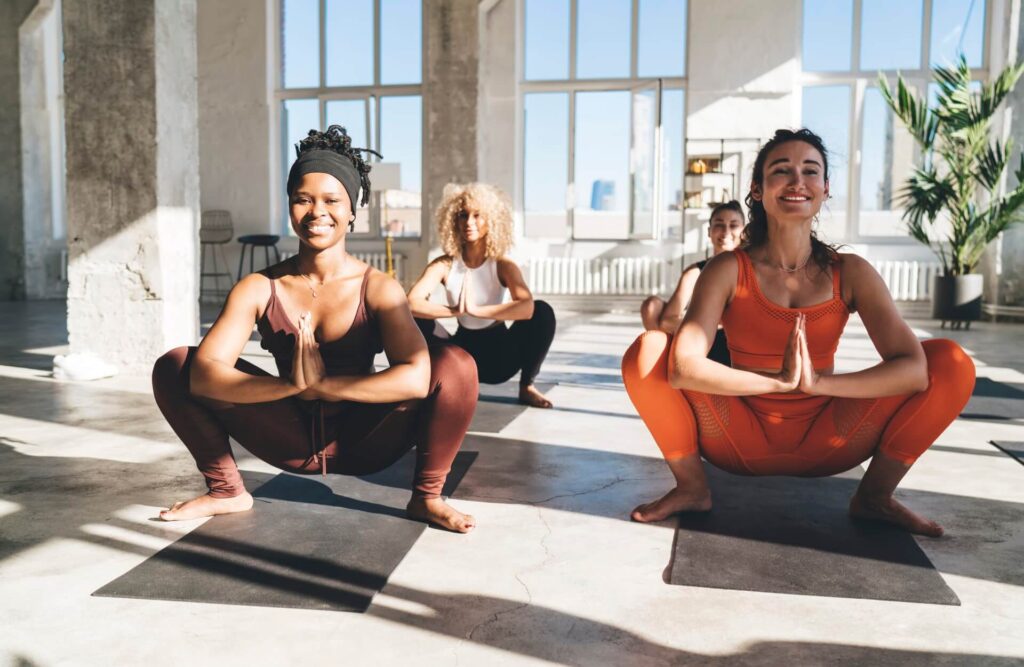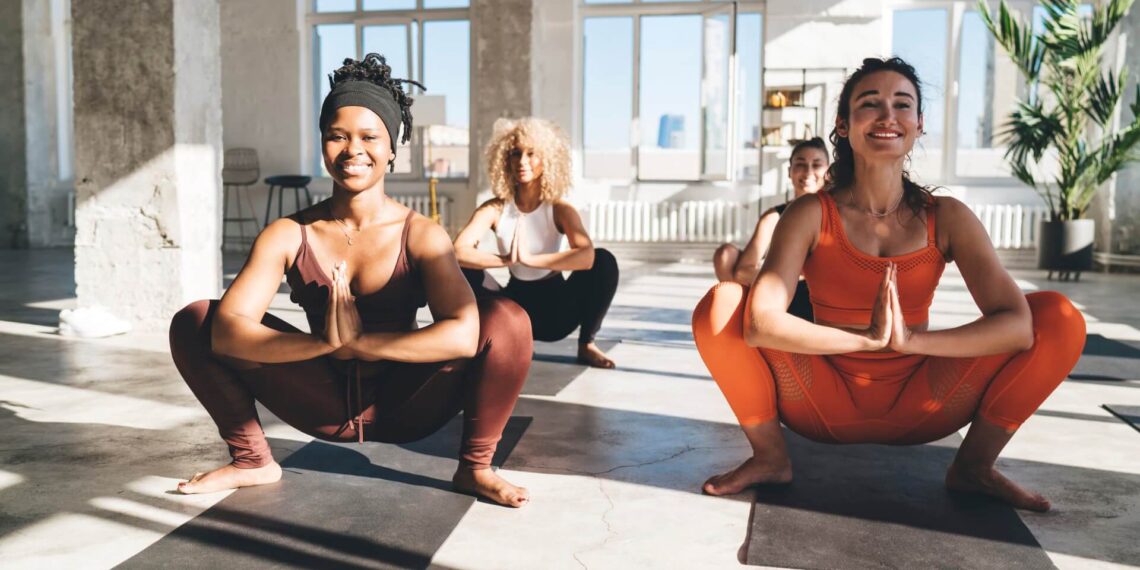“In Malasana, we squat to rise, honoring both the earth beneath us and the sky above us.”
Garland Pose – Malasana (Beginner) in Sanskrit is a fundamental yoga posture that embodies simplicity and grounding. This beginner-friendly asana provides an excellent opportunity to connect with your breath, improve flexibility, and build strength in your lower body.
Malasana Meaning
The name “Malasana” is derived from two Sanskrit words: “Mala,” meaning “garland,” and “Asana,” meaning “pose.” This pose symbolizes the shape of a garland or necklace, with the arms serving as the string of beads. It is a simple and humble pose often associated with yoga’s roots in everyday life.
Benefits of Garland Pose – Malasana
Garland Pose (Malasana) offers a range of physical and mental benefits:
- Hip Flexibility: The pose provides a deep stretch to the hip flexors and groin, enhancing flexibility.
- Ankle Mobility: Malasana helps improve ankle mobility and strength.
- Lower Back Relief: It can relieve tension in the lower back and improve posture.
- Digestive Aid: The squatting position aids digestion and may alleviate constipation.
- Grounding: Practicing this pose brings a sense of grounding and connection to the earth.
Step-by-Step Instructions Garland Pose – Malasana

- Starting Position: Begin in Tadasana (Mountain Pose) at the top of your mat, with your feet hip-width apart and arms at your sides.
- Widen Your Stance: Step your feet slightly wider than hip-width apart.
- Toe Turn Out: Turn your toes outward at a 45-degree angle, creating a V shape with your feet.
- Bend Your Knees: On an exhale, bend your knees deeply, lowering your hips toward the ground.
- Hands to Heart: Bring your hands together at your heart center in a prayer position.
- Press Elbows Against Knees: Gently press your elbows against your inner knees, helping to open the hips.
- Lengthen Spine: Lengthen your spine, keeping it straight and upright.
- Hold and Breathe: Hold the pose for 30 seconds to one minute, breathing deeply.
- Exit the Pose: To release, straighten your legs, return to Tadasana, and lower your arms.
Garland Pose Variations and Modifications Malasana
If your heels don’t touch the ground, you can place a folded mat or cushion under them for support. To deepen the stretch in the hips, you can press your elbows more firmly against your knees. If you have knee issues, you can perform a modified version of Malasana by only bending your knees to a comfortable degree.
Tips for a Deeper Practice Garland Pose – Malasana

Focus on maintaining a steady breath throughout the pose. Visualize yourself sinking into the pose, surrendering any tension in the hips and groin. Experiment with different hand positions, such as reaching your arms forward or clasping your hands behind your back.
Preparation Poses Garland Malasana
Prepare your body for Garland Pose by incorporating these poses into your practice:
- Tadasana (Mountain Pose): Begin with Mountain Pose to establish proper alignment and grounding.
- Wide-Legged Forward Bend (Prasarita Padottanasana): This forward fold can help warm up and lengthen the hamstrings and inner thighs.
Alternative Poses for Garland Pose – Malasana
After practicing Garland Pose, consider these poses to balance your practice:
- Tadasana (Mountain Pose): Return to Mountain Pose to reground and realign your posture.
- Child’s Pose (Balasana): Relax in Child’s Pose to release any tension and restore a sense of calm.
Final Thoughts
Garland Pose (Malasana) invites you to embrace simplicity and grounding in your yoga practice. This beginner-friendly pose nurtures flexibility and balance while offering a sense of connectedness to the earth. As you sink into the gentle squat, remember the profound wisdom found in simplicity, and let Malasana be a reminder of the beauty of uncomplicated presence in your practice and in life.
FAQ Malasana
What is Malasana?
Malasana, also known as the Garland Pose or the Yogic Squat, is a yoga posture that involves squatting down with the heels on the floor and the hands in a prayer position. It is commonly practiced in yoga as it helps stretch the hips, groin, and lower back while also toning the leg muscles.
What are the benefits of practicing Malasana?
Practicing Malasana offers numerous benefits. It helps improve flexibility and mobility in the hips, ankles, and lower back. This pose also strengthens the leg muscles and engages the core. Additionally, Malasana can aid in digestion and relieve tension in the lower body. Regular practice can contribute to better posture and overall body awareness.


